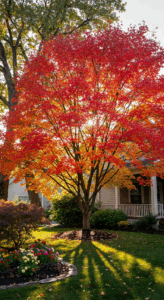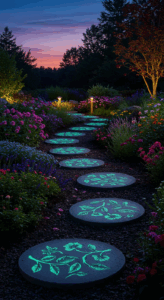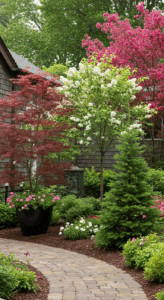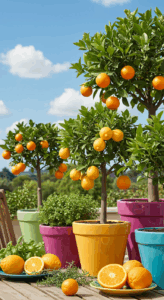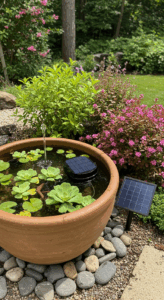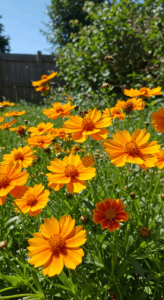1. Arctic Kiwi: A Tiny Treat for Cold Climates
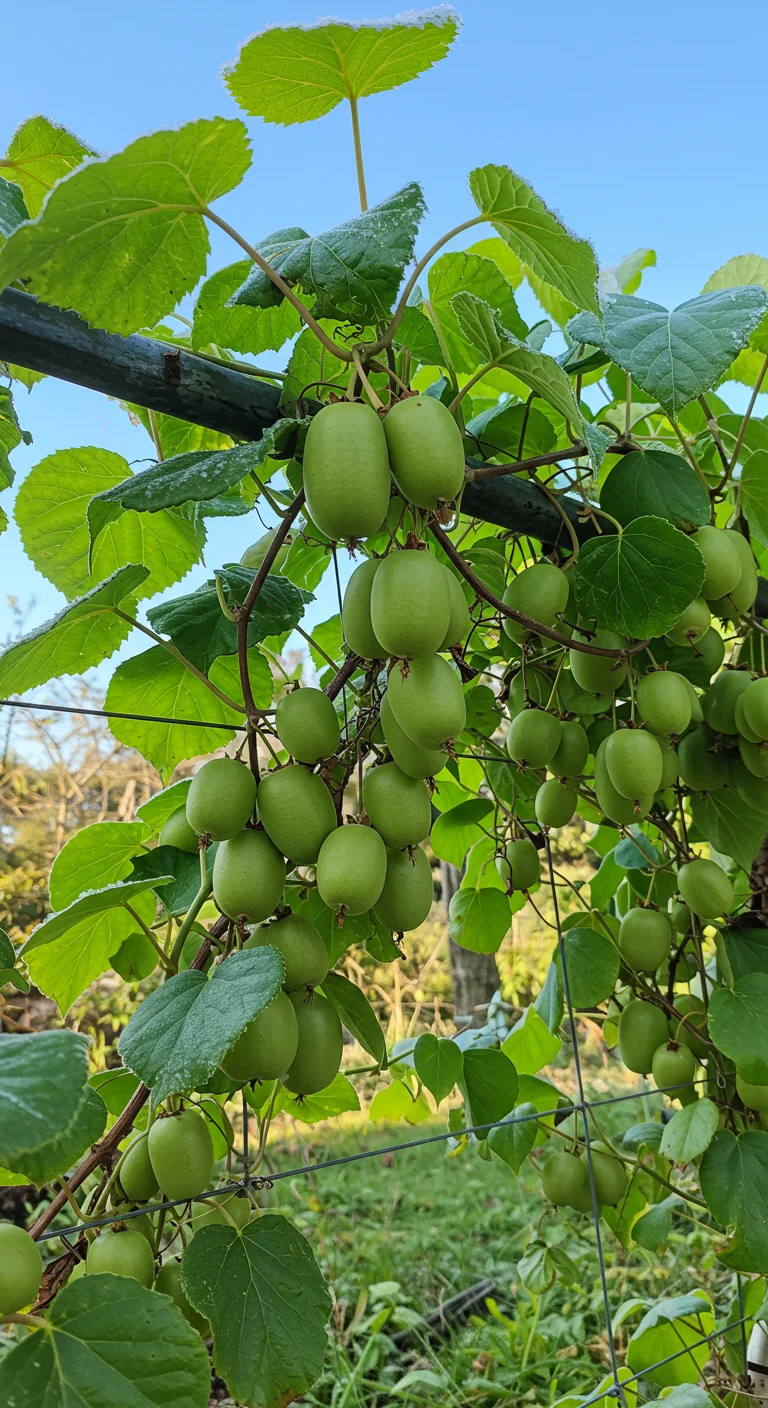
The Arctic Kiwi, also known as the hardy kiwi or baby kiwi, is a remarkable fruit that thrives in the challenging climates of USDA zones 2 and 3. This small, grape-sized fruit is packed with flavor and nutrients, offering a sweet, tangy taste reminiscent of a traditional kiwi but without the fuzzy skin. The Arctic Kiwi plants are vigorous, climbing vines that can withstand temperatures as low as -30°F (-34°C), making them perfect for colder regions. They require full sun and well-draining soil, and once established, they can produce abundant fruit in late summer. With the right care, including proper pruning and support, Arctic Kiwis can be a delightful addition to your garden, providing a unique and hardy fruit option for those living in colder climates.
2. Honeyberry: The Sweetest Surprise of the North
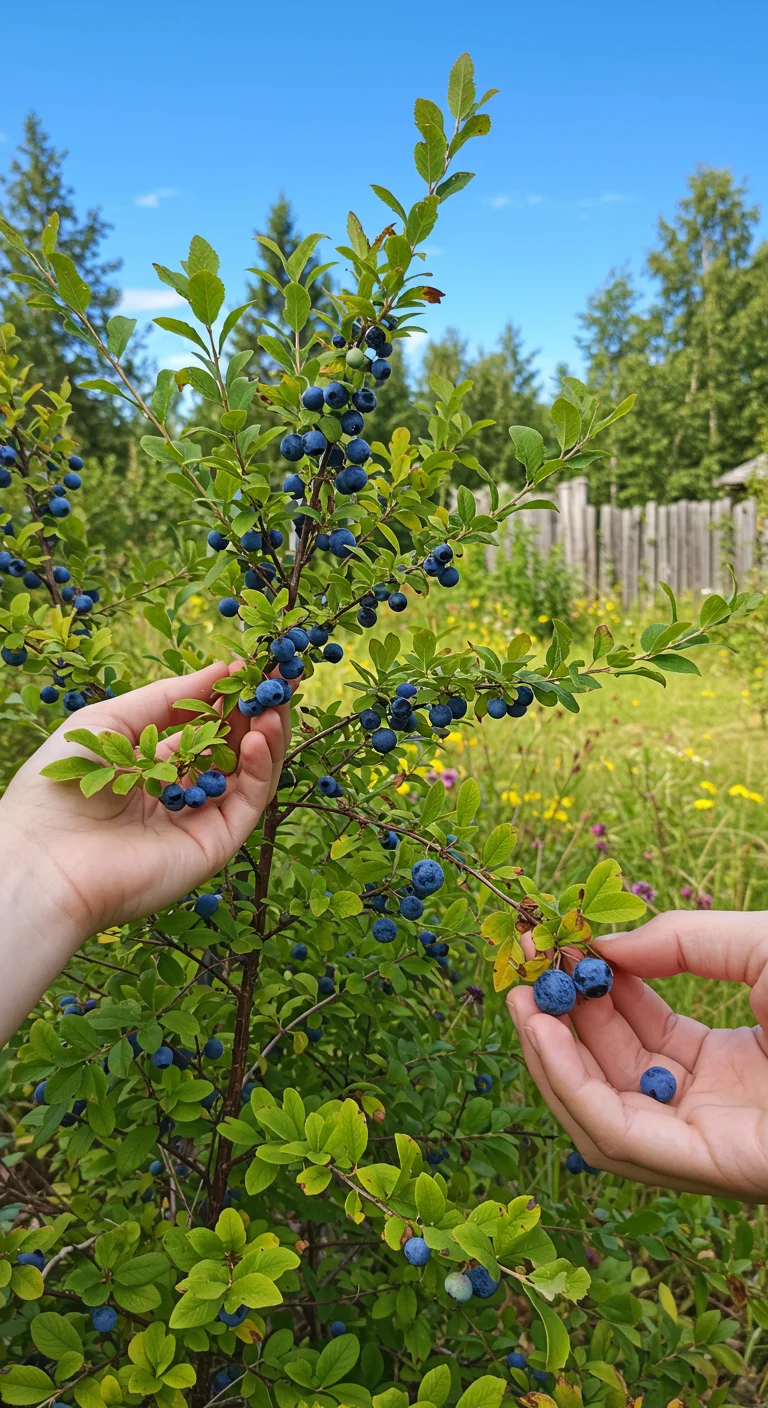
Honeyberries, also known as Haskap berries, are a delightful and hardy fruit that thrive in colder climates, making them an ideal choice for gardeners in Zones 2 and 3. These early-ripening berries boast a unique sweet-tart flavor reminiscent of a blend between blueberries and raspberries, and they are packed with antioxidants and vitamins. Honeyberries are particularly easy to grow, requiring well-drained soil and full sun to flourish. They are also self-pollinating, but planting multiple varieties can enhance fruit yield. Harvesting typically occurs in late spring to early summer, and the berries can be enjoyed fresh or used in jams, jellies, and desserts, providing a burst of flavor and nutrition in your garden’s bounty. With minimal maintenance, honeyberries are a sweet surprise that can bring joy to any northern garden.
3. Sea Buckthorn: Nature’s Nutrient Powerhouse
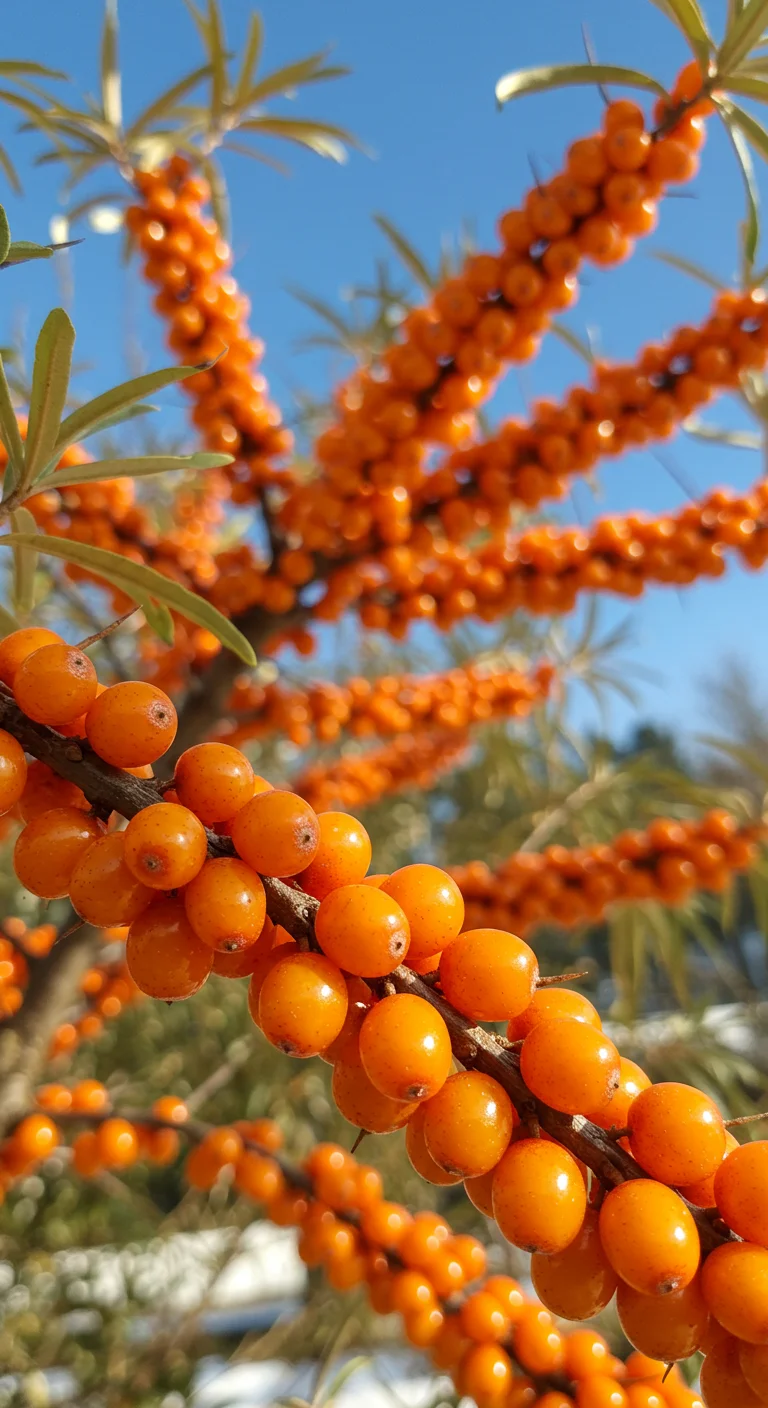
Sea buckthorn is a hardy fruit that thrives in Zones 2 and 3, making it an excellent choice for cold-climate gardeners. This nutrient powerhouse is renowned for its vibrant orange berries, which are packed with vitamins A, C, E, and essential fatty acids. Not only do these berries contribute to a healthy immune system, but they also promote skin health and provide anti-inflammatory benefits. Sea buckthorn shrubs are resilient, able to withstand poor soil conditions and harsh weather, and they can be easily propagated from cuttings or seeds. Incorporating sea buckthorn into your garden not only diversifies your fruit offerings but also adds an eye-catching visual element with its lush foliage and bright berries, attracting wildlife and beneficial pollinators alike.
4. Black Currant: A Berry Bursting with Benefits
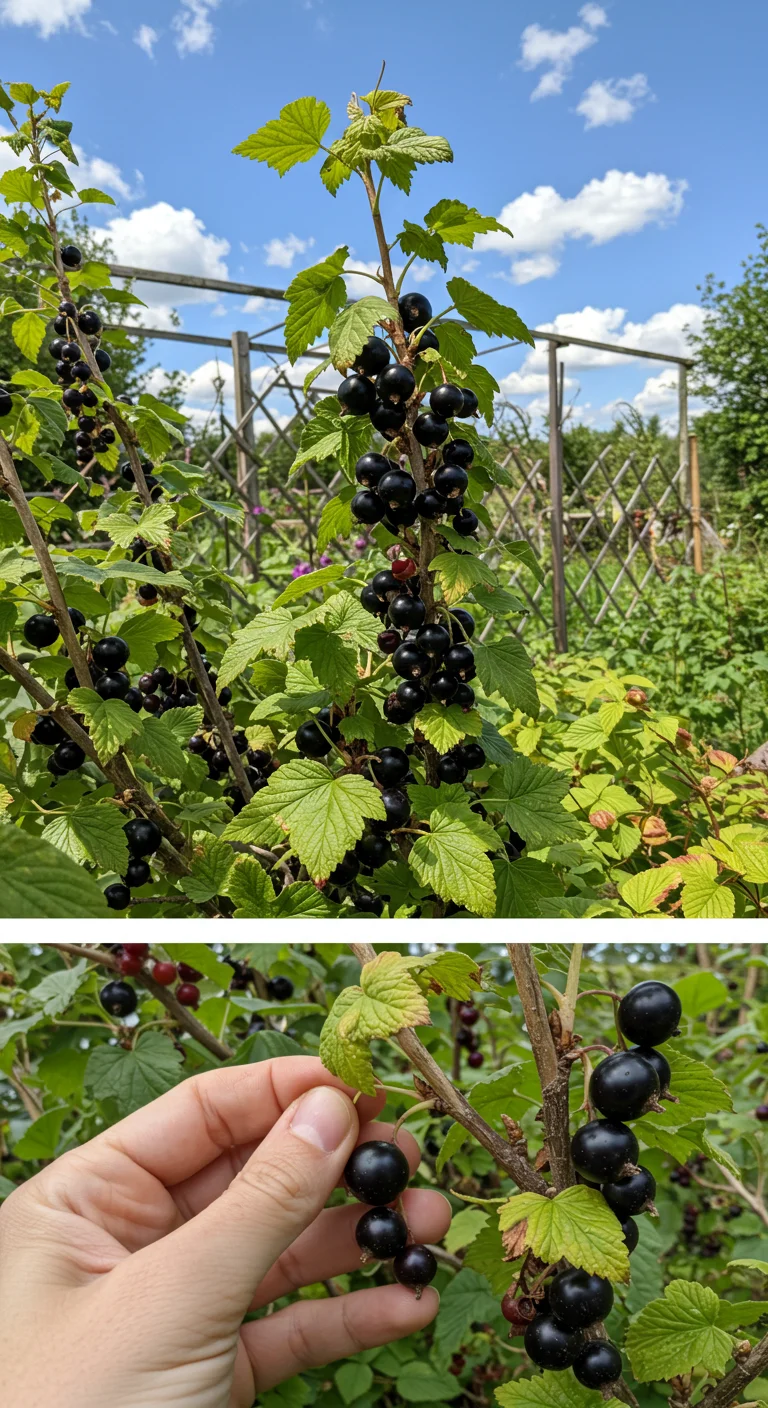
Black currants are a nutrient-dense superfruit perfect for gardeners in Zones 2 and 3. These hardy berries thrive in cooler climates and can withstand winter temperatures as low as -30°F. Packed with antioxidants, particularly vitamin C, black currants support immune health and boost overall vitality. They are also rich in anthocyanins, which may help reduce inflammation and improve heart health. In addition to their health benefits, black currants are versatile in the kitchen; they can be used to make jams, jellies, and even wines. When planting, choose a sunny location with well-drained soil for optimal growth and consider companion planting with other berries to improve pollination and yield. With minimal care and the right conditions, black currants can provide you with a bountiful harvest year after year.
5. Red Currant: Tart and Tantalizing for Your Garden
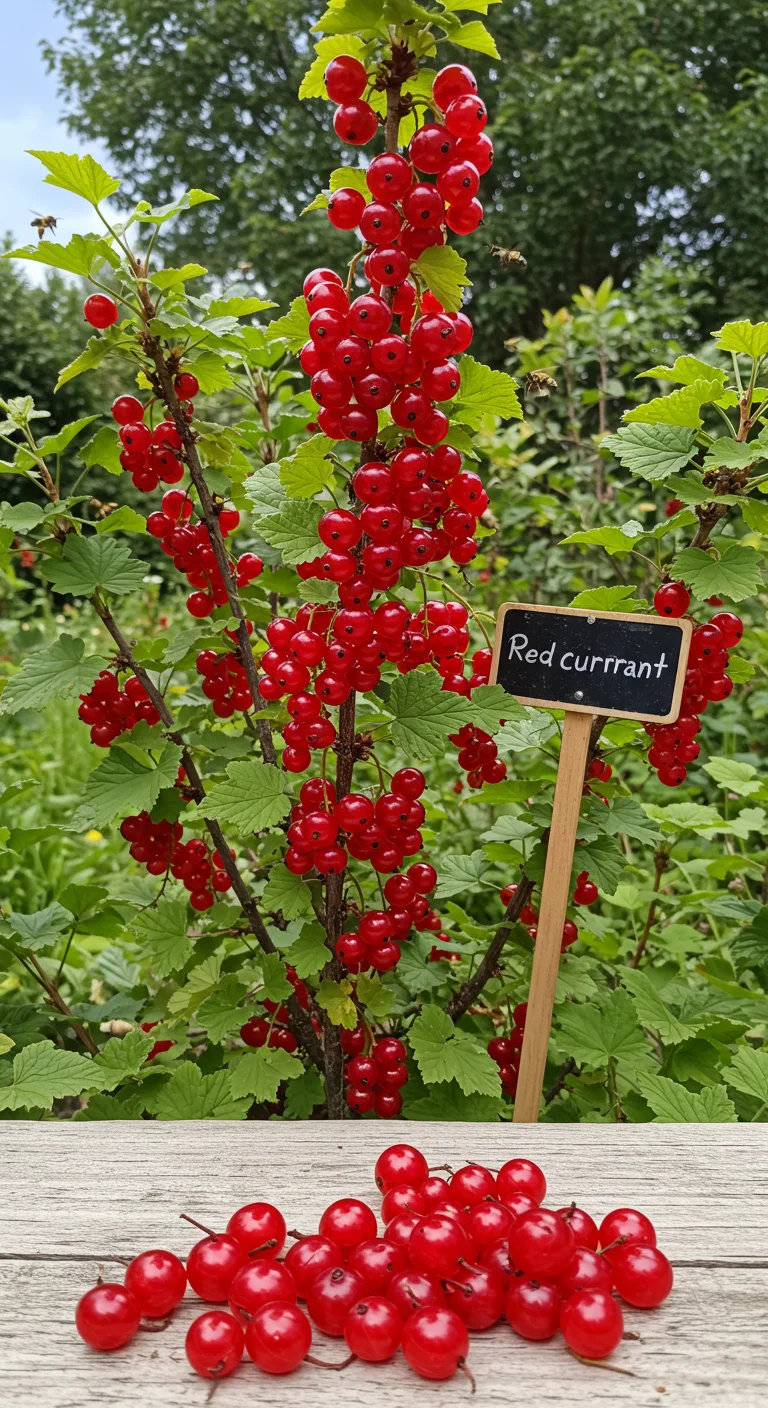
Red currants are a delightful addition to any garden in Zones 2 and 3, thriving in cooler climates with proper care. These small, tart berries grow on hardy shrubs that can withstand the chill of winter while producing a bountiful harvest in mid-summer. They prefer well-drained soil and a sunny location, though they can tolerate partial shade. Regular pruning encourages better air circulation and fruit production. Rich in vitamin C and antioxidants, red currants are perfect for jams, jellies, and even fresh salads, adding a burst of color and flavor. With their vibrant red hue and unique taste, they not only enhance your culinary creations but also attract beneficial pollinators to your garden.
6. Gooseberry: The Forgotten Fruit with Ancient Roots
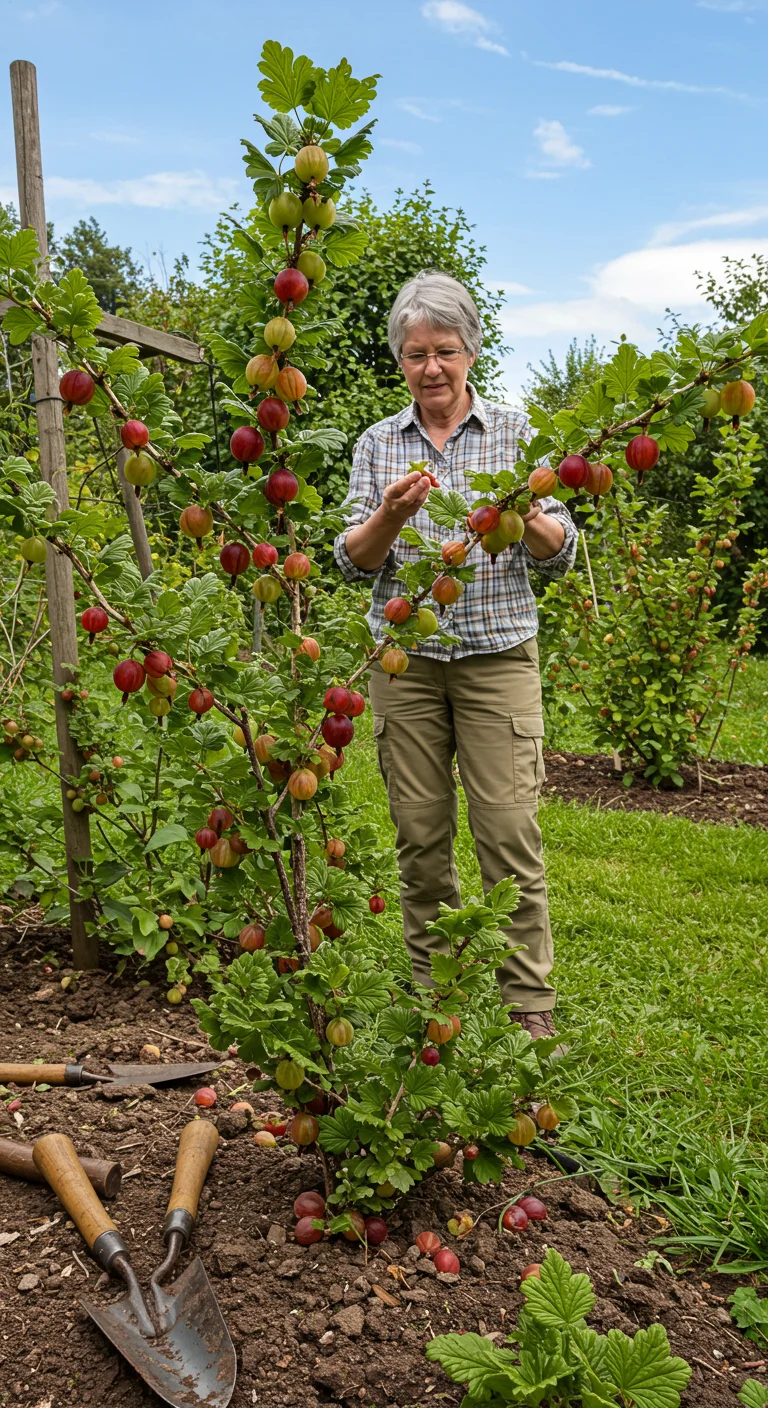
Gooseberries are a resilient fruit that can thrive in colder climates, making them a perfect choice for gardeners in Zones 2 and 3. With their tart flavor and high vitamin C content, these small, round berries have been cultivated since ancient times and are often overlooked in modern gardening. Gooseberries can be grown as bushes or trained on trellises, providing versatility for your garden layout. They prefer well-drained soil and can tolerate partial shade, but a sunny spot will yield the best fruit. Regular pruning helps maintain bush shape and encourages better air circulation, reducing the risk of disease. Harvesting can occur from late spring to early summer when the berries turn a vibrant green, yellow, or red, depending on the variety. Incorporating gooseberries into your garden not only diversifies your fruit selection but also connects you with a rich agricultural heritage.
7. Saskatoon Berry: A Multi-Season Marvel
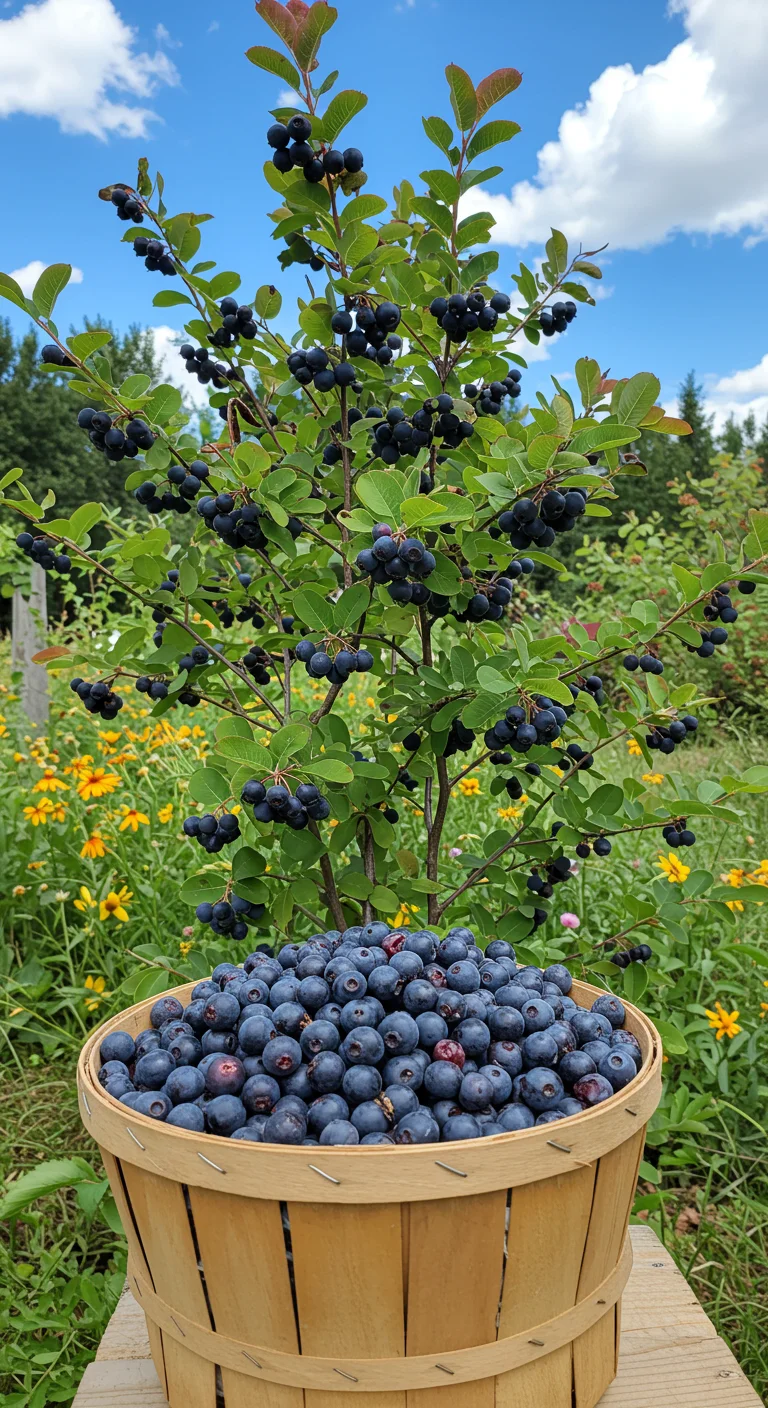
Saskatoon berries are a resilient and versatile fruit that thrive in hardiness zones 2 and 3, making them an excellent choice for northern gardeners. These small, sweet berries, resembling blueberries, can be harvested in mid-summer and are packed with nutrients, including antioxidants, vitamins, and fiber. Beyond their delicious flavor, Saskatoon berries are incredibly adaptable; they can be eaten fresh, baked in pies, or made into jams and jellies. Moreover, their beautiful white blossoms in spring and vibrant autumn foliage provide aesthetic appeal throughout the seasons. With proper care, such as ensuring well-draining soil and adequate sunlight, Saskatoon berry bushes can yield fruit for decades, making them a valuable addition to any edible landscape.
8. Chokecherry: The Versatile and Hardy Fruit
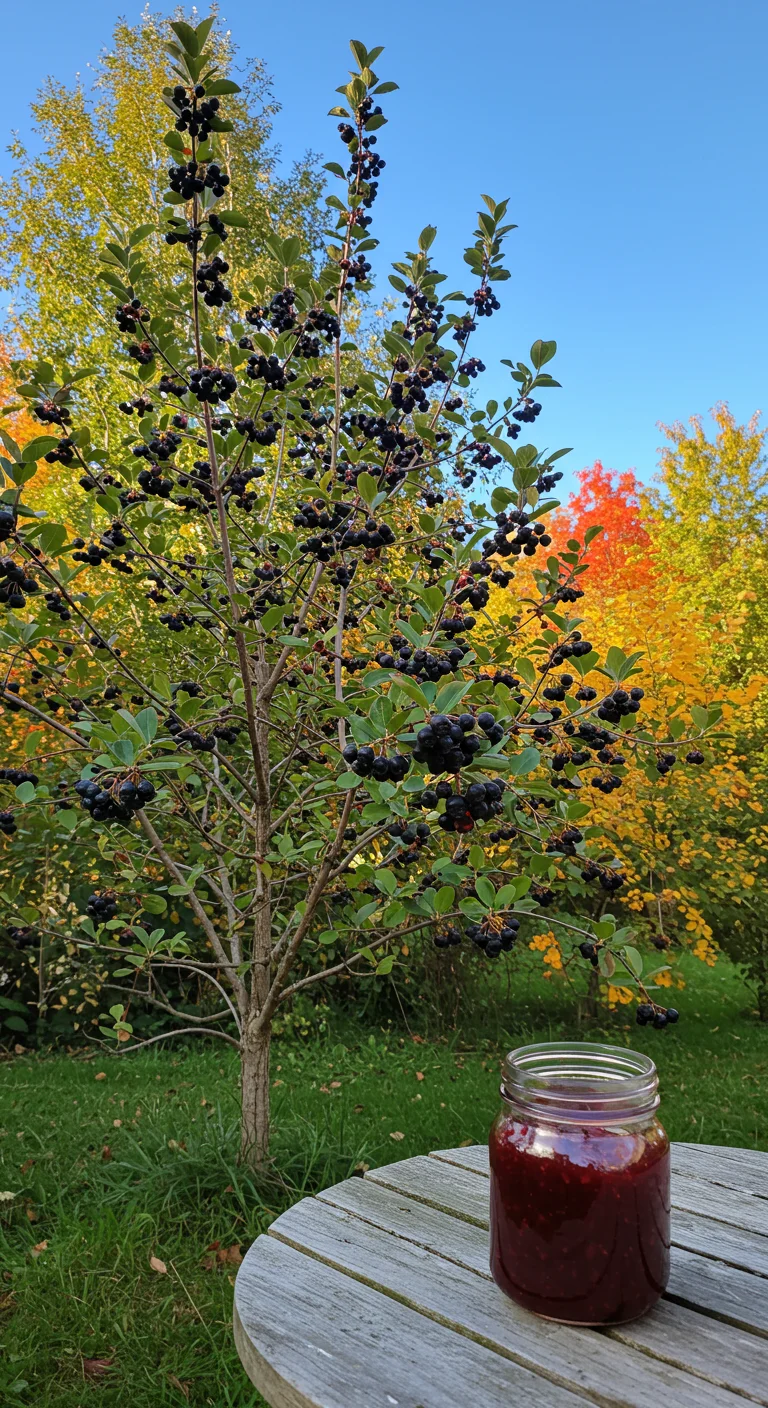
Chokecherries are a remarkable fruit for gardeners in Zones 2 and 3, known for their hardiness and adaptability. These small, dark berries grow on clusters and are often found in wild settings, making them a resilient choice for your backyard. They thrive in a variety of soil types, particularly well-drained soils, and require minimal care once established. Chokecherries are not only edible but also versatile; they can be used to make jams, jellies, syrups, and even wines, allowing you to create delicious homemade products. Additionally, the trees themselves provide excellent wildlife habitat, attracting birds and other beneficial creatures. With their stunning fall foliage and the ability to withstand cold temperatures, chokecherries are a delightful addition to any garden in colder climates.
9. Serviceberry: Your All-in-One Fruiting Solution
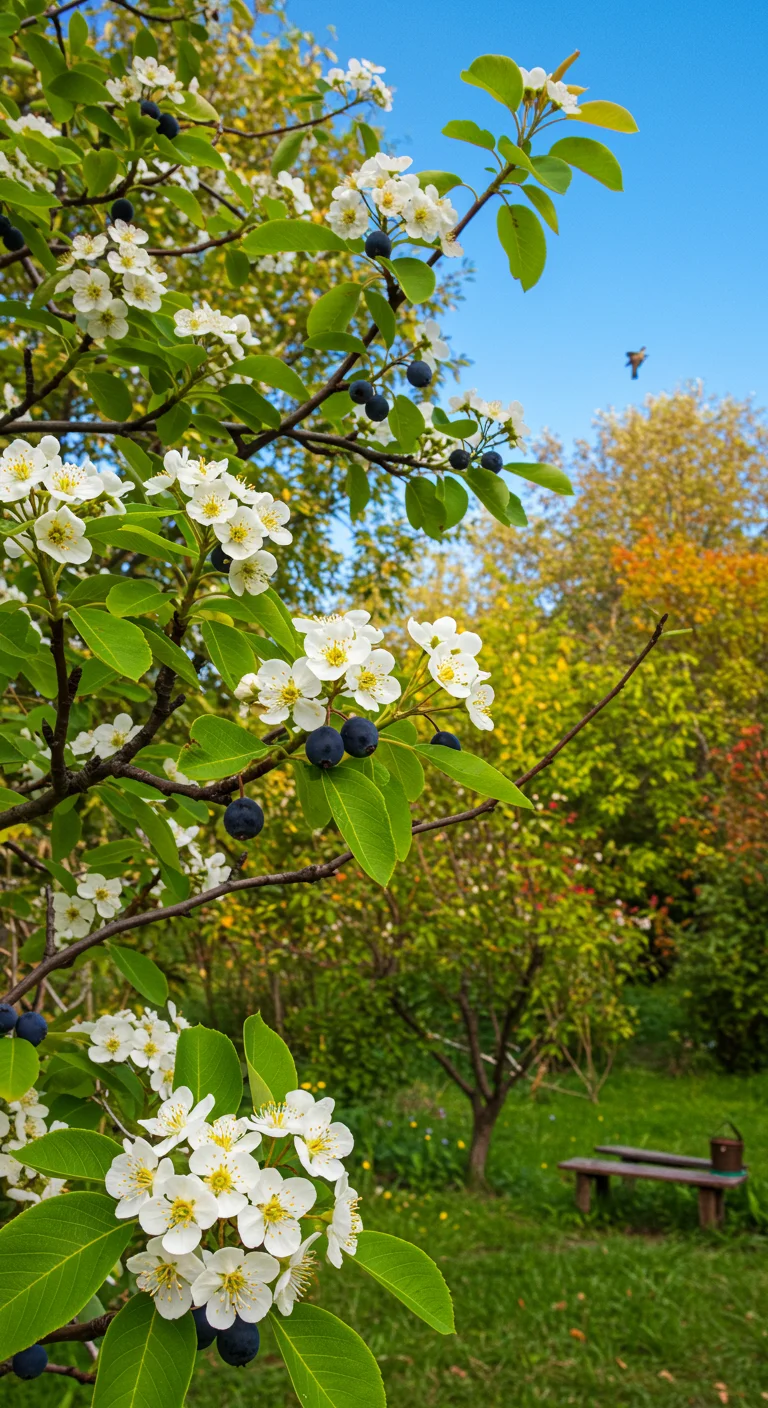
Serviceberry, also known as Juneberry, is an exceptional choice for gardeners in Zones 2 and 3, offering a multitude of benefits. This hardy shrub produces sweet, edible berries that resemble blueberries and are packed with nutrients, making them perfect for fresh eating, jams, or pies. Not only does serviceberry thrive in cold climates, but it also boasts stunning white flowers in spring and vibrant fall foliage, enhancing your landscape year-round. It’s a low-maintenance plant that adapts well to various soil types and can be grown as a shrub or small tree, providing versatility in your garden. Planting serviceberries in a sunny or partially shaded spot will ensure a bountiful harvest, attracting birds and pollinators while enriching your garden’s biodiversity.
10. Raspberries: The Resilient Berry for Cold Climates
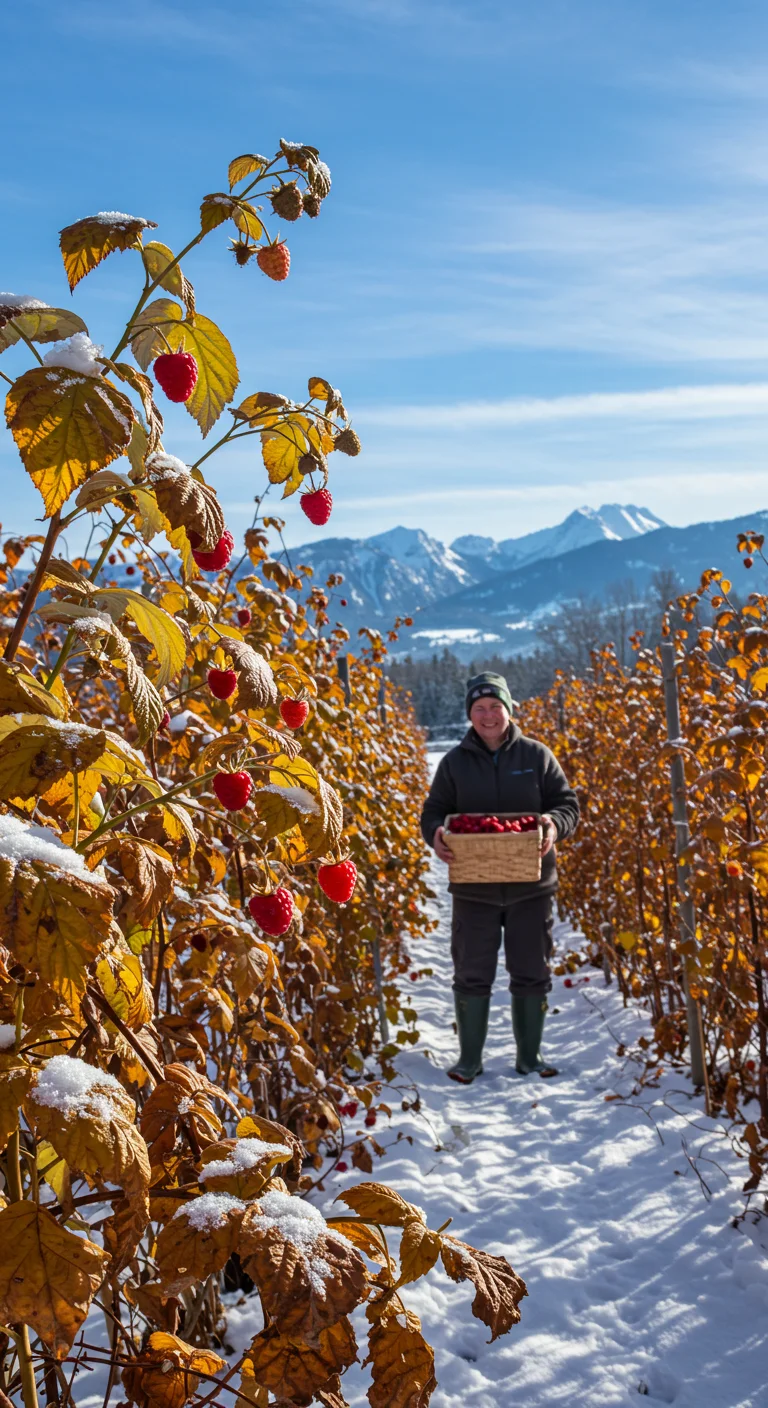
Raspberries are a fantastic choice for gardeners in colder climates, particularly in USDA Zones 2 and 3, thanks to their remarkable resilience and adaptability. These perennial plants thrive in well-drained, loamy soil and prefer full sun, although they can tolerate partial shade. Consider planting a mix of summer-bearing and ever-bearing varieties for a continuous harvest from late spring through fall. Raspberries can withstand winter temperatures as low as -30°F (-34°C) if properly mulched and protected. It’s essential to prune them annually to promote healthy fruiting and prevent disease. With some care and attention, you can enjoy bountiful yields of sweet, juicy raspberries, making them a rewarding addition to your cold-climate garden.
11. Blueberries: Hardy Varieties That Thrive in the Cold
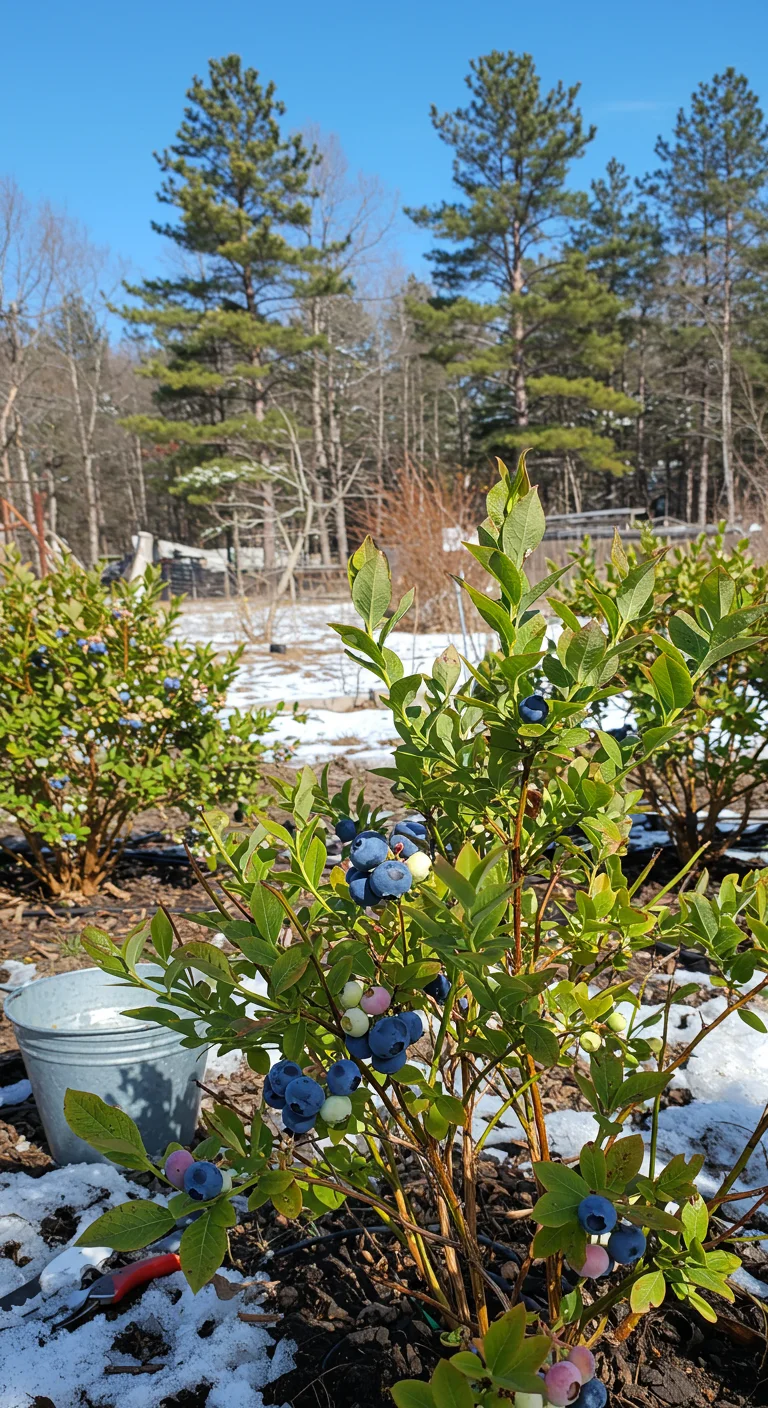
Blueberries are not only delicious but also incredibly resilient, making them an excellent choice for gardeners in Zones 2 and 3. Varieties such as Northcountry, Northblue, and Patriot have been specifically bred to withstand colder climates while producing sweet, nutritious fruit. These lowbush and highbush types thrive in well-drained, acidic soils enriched with organic matter. For optimal growth, ensure they receive full sun for at least six hours a day, and consider planting them in sheltered spots to protect against harsh winter winds. Pruning in late winter can enhance fruit production, so don’t forget to maintain their structure. With proper care, you can enjoy a bountiful blueberry harvest even in the coldest regions.
12. Lingonberries: The Superfood of the North
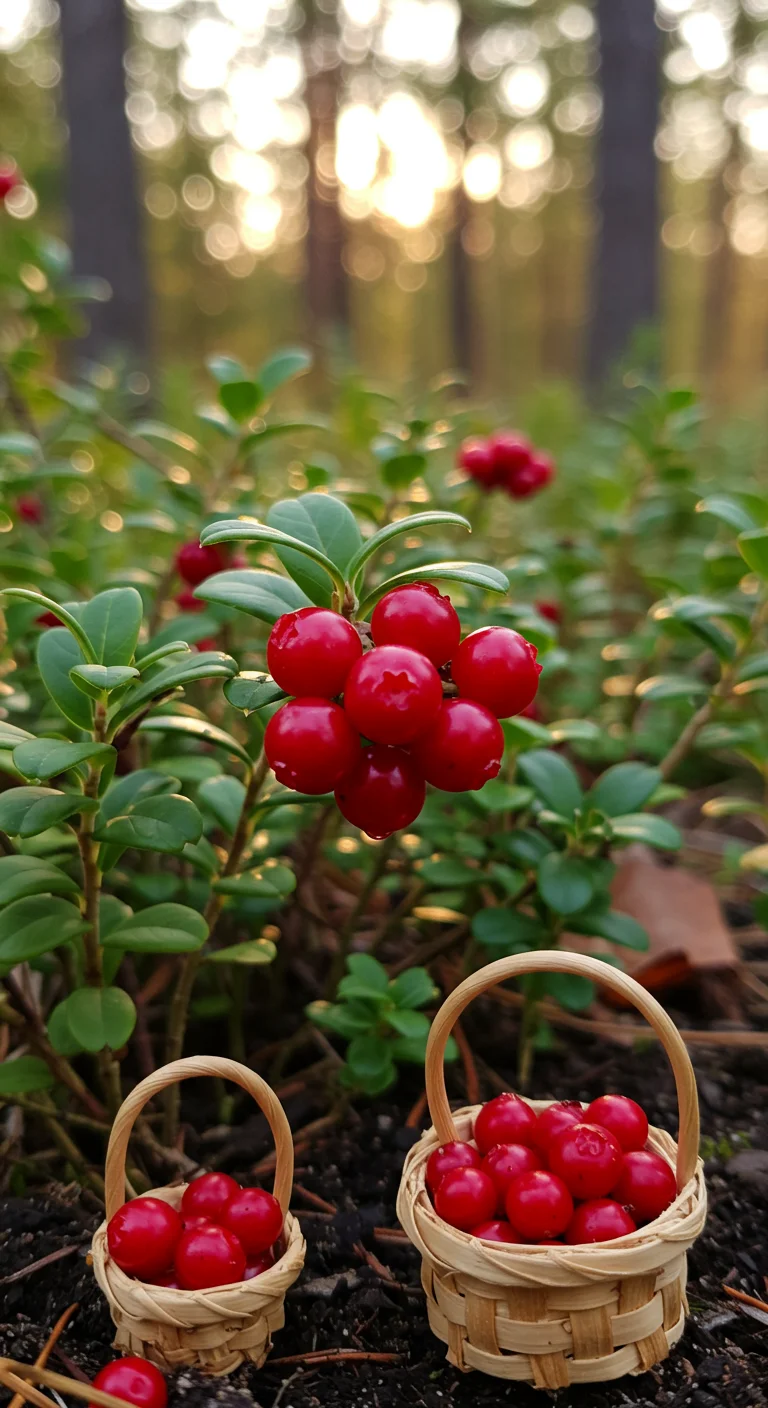
Lingonberries, a resilient superfood native to the northern regions, thrive in USDA hardiness zones 2 and 3, making them an excellent choice for cooler climates. These small, tart red berries are not only rich in antioxidants, vitamins, and minerals but also have anti-inflammatory properties, which contribute to overall health. They grow well in acidic, well-drained soil and can be cultivated as ground cover or in raised beds. Lingonberries are also self-pollinating, which simplifies their cultivation, and they produce fruit in late summer to early fall. Enjoy them fresh, or preserve their vibrant flavor in jams, sauces, or baked goods, adding a nutritious twist to your meals while benefiting from their unique taste and health properties.
13. Dwarf Apple Trees: Miniature Marvels for Small Spaces
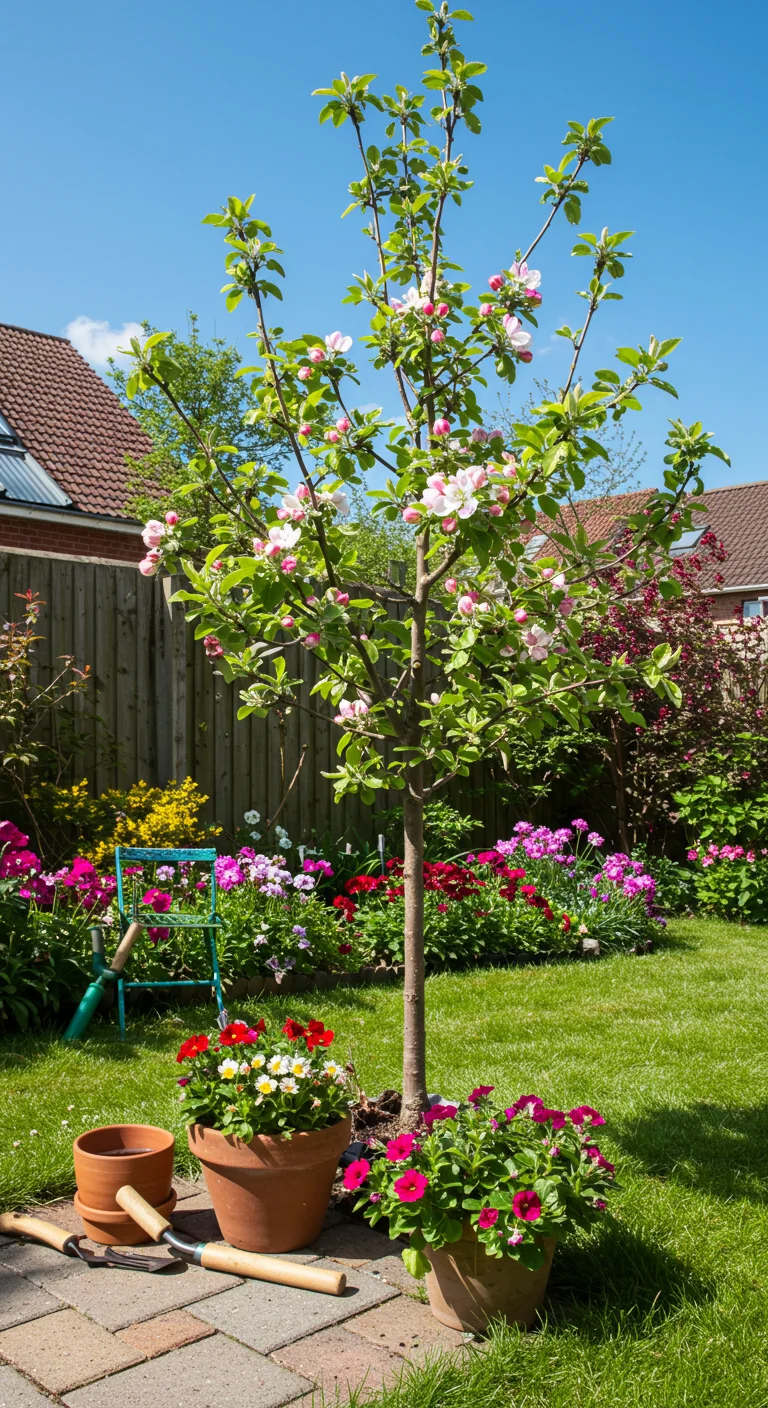
Dwarf apple trees are a superb choice for gardeners in Zones 2 and 3, offering the perfect solution for small spaces while delivering delightful fruit. Typically reaching heights of just 4 to 8 feet, these miniature marvels can thrive in containers or small garden beds, making them ideal for patios and urban gardens. Varieties such as ‘Honeycrisp’ and ‘Garden Delicious’ are known for their cold hardiness and exceptional flavor. To ensure optimal growth, plant them in well-drained soil and provide ample sunlight, ideally 6 to 8 hours per day. Regular pruning not only maintains their shape but also encourages higher fruit yields. With proper care, dwarf apple trees can produce an impressive harvest, allowing you to enjoy homegrown apples even in the most limited growing conditions.
14. Arctic Raspberry: A Frigid Favorite
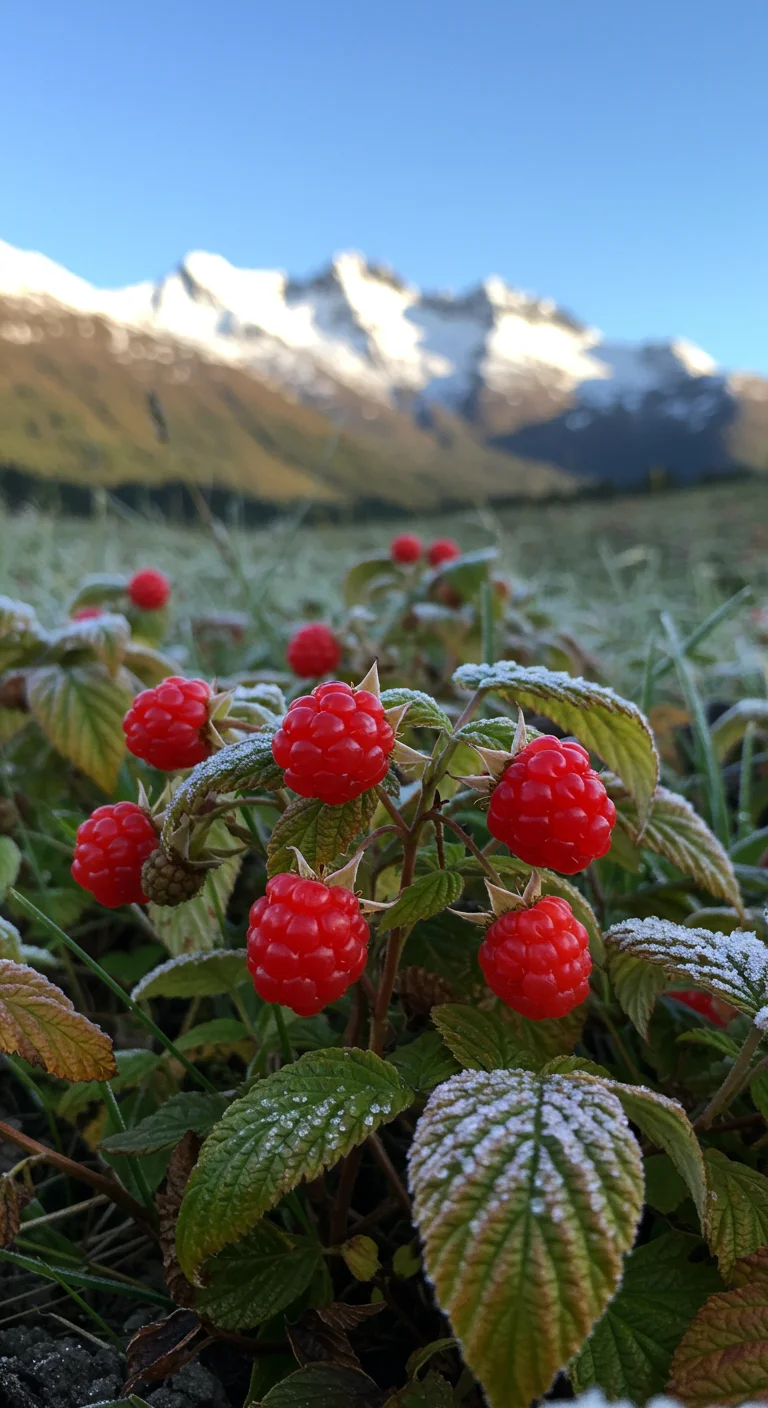
Arctic Raspberry, also known as Rubus arcticus, is a resilient fruit that thrives in the harsh climates of Zones 2 and 3. This hardy perennial produces small, sweet, and aromatic berries that can be enjoyed fresh or used in jams and desserts. Known for their unique flavor profile, Arctic Raspberries are best grown in well-drained, sandy soil with full sun exposure, although they can tolerate partial shade. These plants are low-growing, reaching only about 12-18 inches in height, making them perfect for borders or ground cover. Additionally, they require minimal maintenance and can survive extreme cold temperatures, making them an ideal choice for northern gardeners looking to add a burst of flavor to their landscapes while withstanding the frigid conditions of their environment.
15. Elderberry: A Hardy Healer for Your Garden
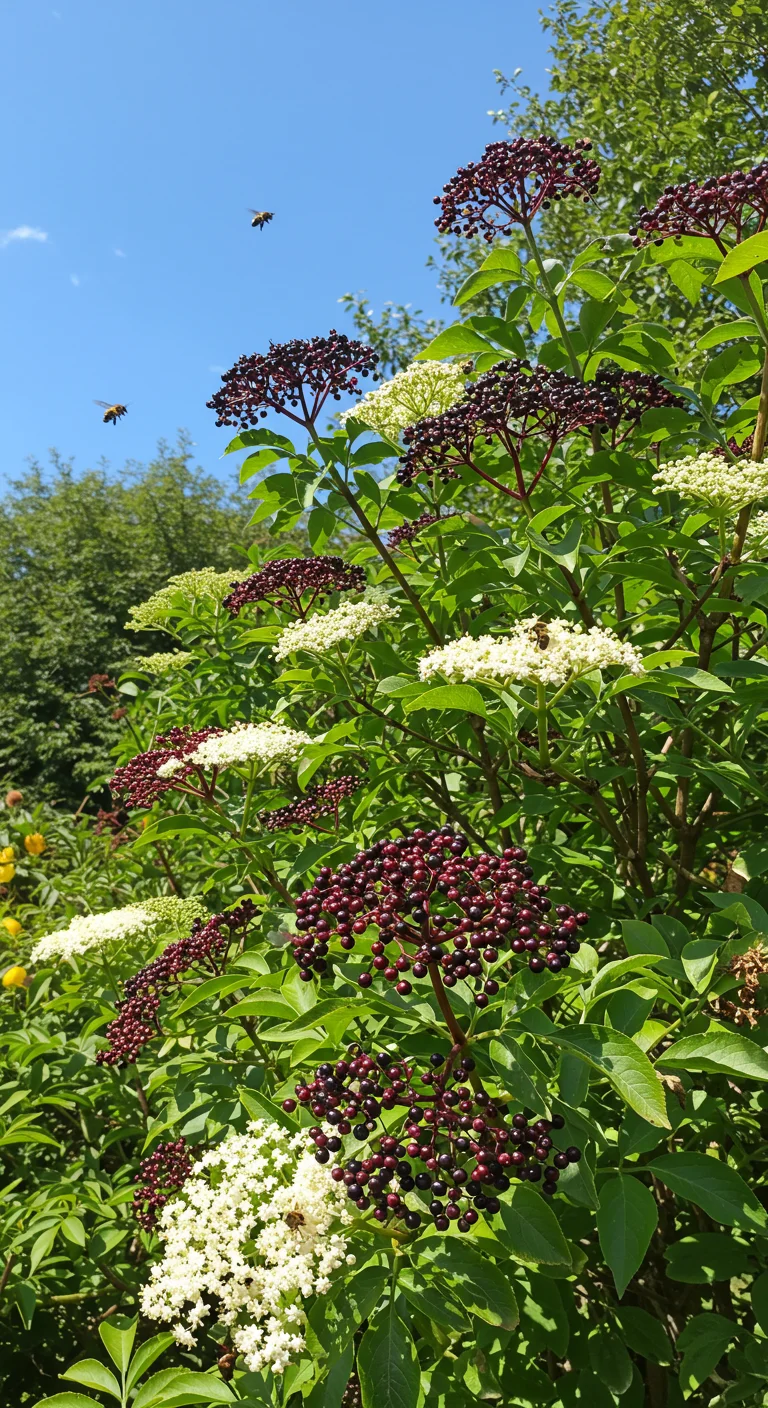
Elderberry (Sambucus nigra) is a robust and resilient shrub that thrives in Zones 2 and 3, making it an excellent choice for gardeners in cooler climates. This hardy plant produces clusters of small, dark berries that are not only delicious but also packed with antioxidants and vitamins, particularly Vitamin C. Elderberries can be used to make syrups, jams, and wines, offering both culinary and medicinal benefits. They prefer well-drained soil and full sun to partial shade, and once established, they require minimal maintenance. Additionally, elderberry plants attract pollinators, adding biodiversity to your garden. When planting, ensure to space them adequately to allow for their natural growth, as they can become quite large, reaching heights of 6 to 12 feet. With their striking flowers and vibrant berries, elderberries are both functional and beautiful additions to any garden.
16. Crabapple: The Ornamental Fruit with a Purpose

Crabapple trees, known for their stunning early spring blossoms, are not only ornamental but also serve practical purposes in colder climates like Zones 2 and 3. These hardy trees can withstand harsh winters and provide vibrant hues of pink and white flowers, attracting pollinators and adding beauty to your landscape. Beyond aesthetics, crabapples produce small fruits that can be used for making jellies, sauces, and even cider, offering a delightful tartness that enhances culinary creations. Additionally, their fruit is a valuable food source for birds and wildlife, making them an eco-friendly choice for gardens aiming to support local fauna. With minimal care and a range of varieties suited for smaller spaces, crabapples are a versatile addition to any northern garden.
17. Nanking Cherry: A Sweet Surprise in the Spring
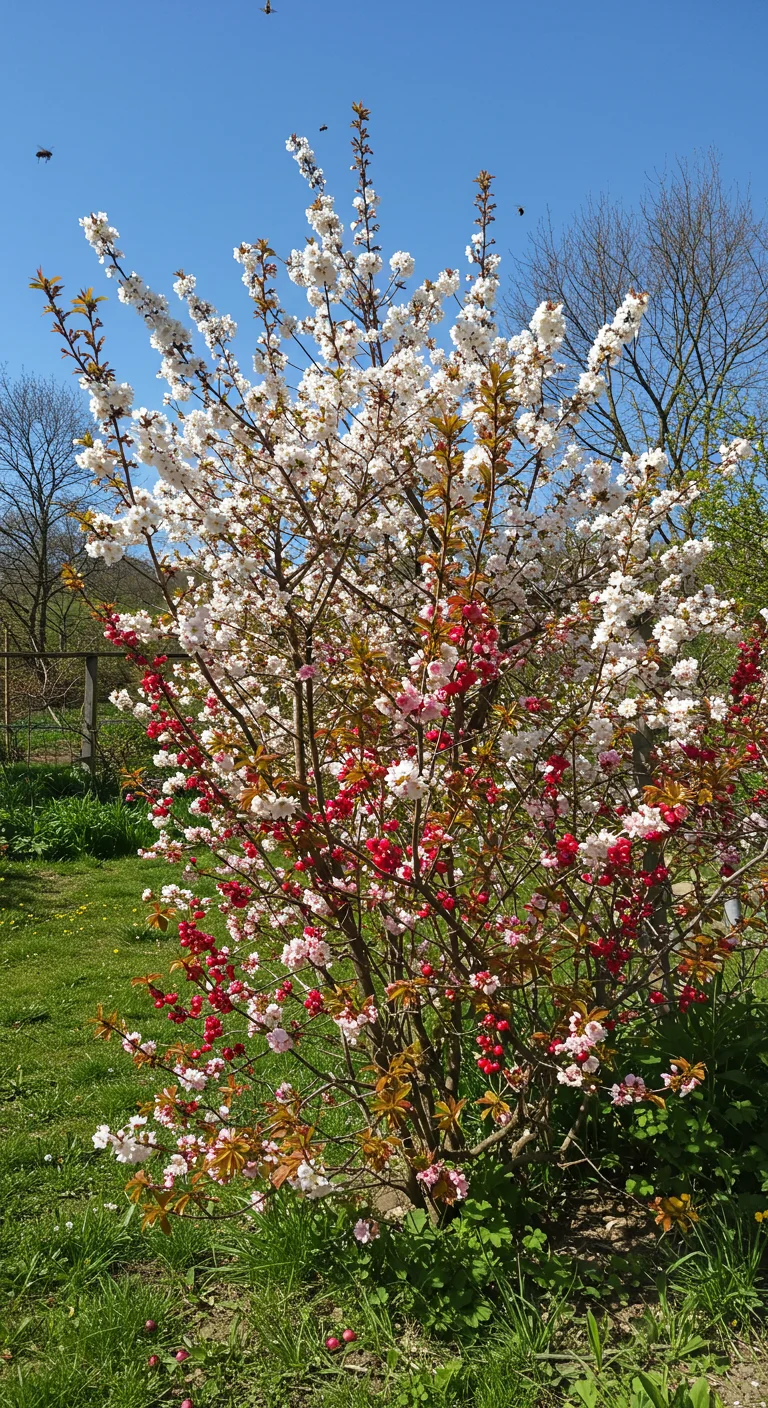
Nanking cherry (Prunus tomentosa) is a delightful choice for gardeners in Zones 2 and 3, offering both ornamental beauty and delicious fruit. This hardy shrub can tolerate colder climates and blooms in early spring with fragrant white to pale pink flowers that attract pollinators. By mid-summer, its small, bright red cherries ripen, boasting a sweet-tart flavor that makes them perfect for fresh eating, jams, or baking. Nanking cherries thrive in well-drained soil and prefer full sun, which helps maximize fruit production. With minimal maintenance and a resilient nature, these shrubs can be easily integrated into home gardens, providing an early harvest and stunning springtime blooms that truly brighten the landscape. Consider planting Nanking cherries for a reliable and rewarding fruit-bearing shrub that enhances both your garden’s aesthetic and culinary offerings.
18. Pears: Cold-Hardy Varieties for Your Orchard
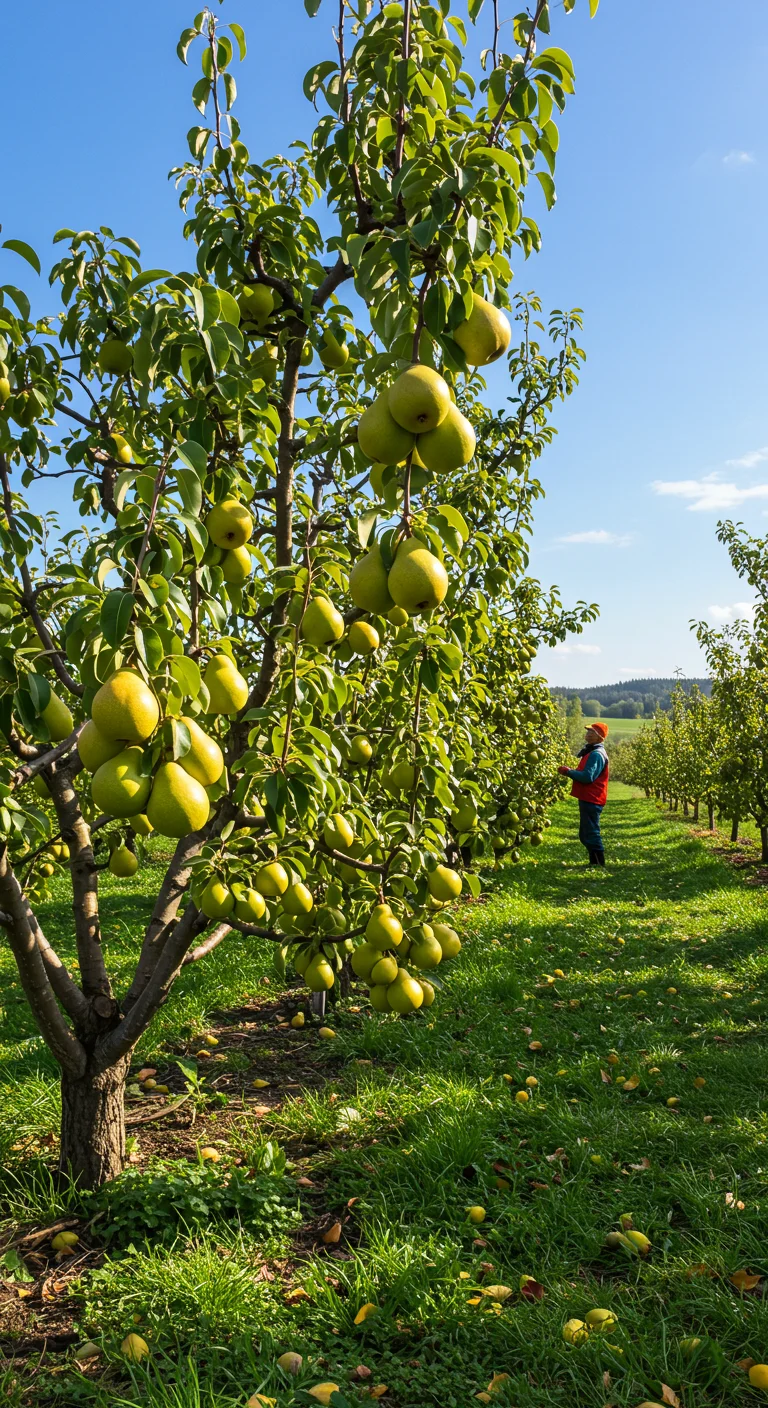
When selecting cold-hardy pear varieties for your orchard in Zones 2 and 3, consider options such as the ‘Harrow Sweet’, ‘Ure’, and ‘Luscious’ pears. These varieties not only withstand harsh winters but also produce sweet, juicy fruit that matures in late summer to early fall. ‘Harrow Sweet’ is particularly valued for its exceptional flavor and resistance to fire blight, while ‘Ure’ is known for its crisp texture and ability to thrive in colder climates. Additionally, ‘Luscious’ pears are praised for their rich taste and versatility, making them ideal for fresh eating or canning. Plant these varieties in well-drained soil with adequate sunlight to ensure a bountiful harvest, and consider cross-pollination for better fruit set.
19. Plums: The Resilient Stone Fruit for Cold Zones

Plums are a remarkably resilient stone fruit that can thrive in colder climates, making them an excellent choice for gardeners in Zone 2 and 3. These hardy trees can withstand harsh winters and still produce delicious fruit in the summer months. When selecting plum varieties for colder regions, look for cold-hardy cultivars such as ‘Superior’ or ‘Toka,’ which are known for their resilience and adaptability. Plant them in well-drained soil and ensure they receive full sunlight to maximize fruit production. Additionally, plum trees benefit from regular pruning to promote healthy growth and improve air circulation, reducing the risk of diseases. With proper care, you can enjoy a bountiful harvest of sweet and juicy plums, perfect for fresh eating, cooking, or preserving.
20. Honeycrisp Apples: The Crisp and Delicious Delight
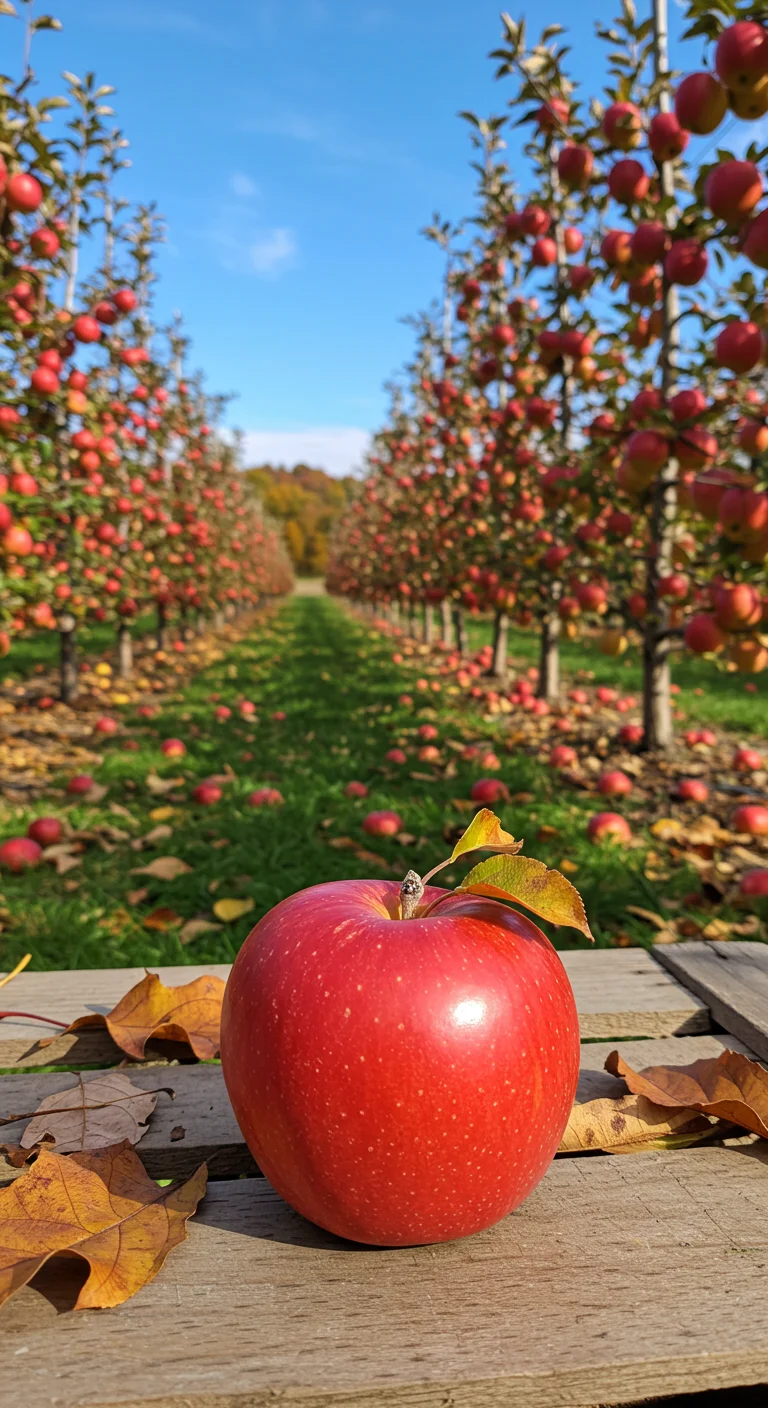
Honeycrisp apples are a standout choice for gardeners in Zones 2 and 3, renowned for their exceptional crispness and sweetness that make them a favorite among apple enthusiasts. This cultivar thrives in colder climates, requiring well-drained soil and full sunlight for optimal growth. Honeycrisp trees are relatively hardy and can withstand harsh winters, making them an ideal addition to any northern orchard. They typically bear fruit in late summer to early fall, and their distinctive flavor profile combines a refreshing balance of sweetness and tartness. With proper care, including regular pruning and pest management, you can enjoy a bountiful harvest of these delicious apples, perfect for fresh eating, baking, or preserving. Their resilience and taste make Honeycrisp apples a delightful and rewarding fruit to cultivate in colder regions.
21. Blackberries: Hardy Varieties That Stand the Cold
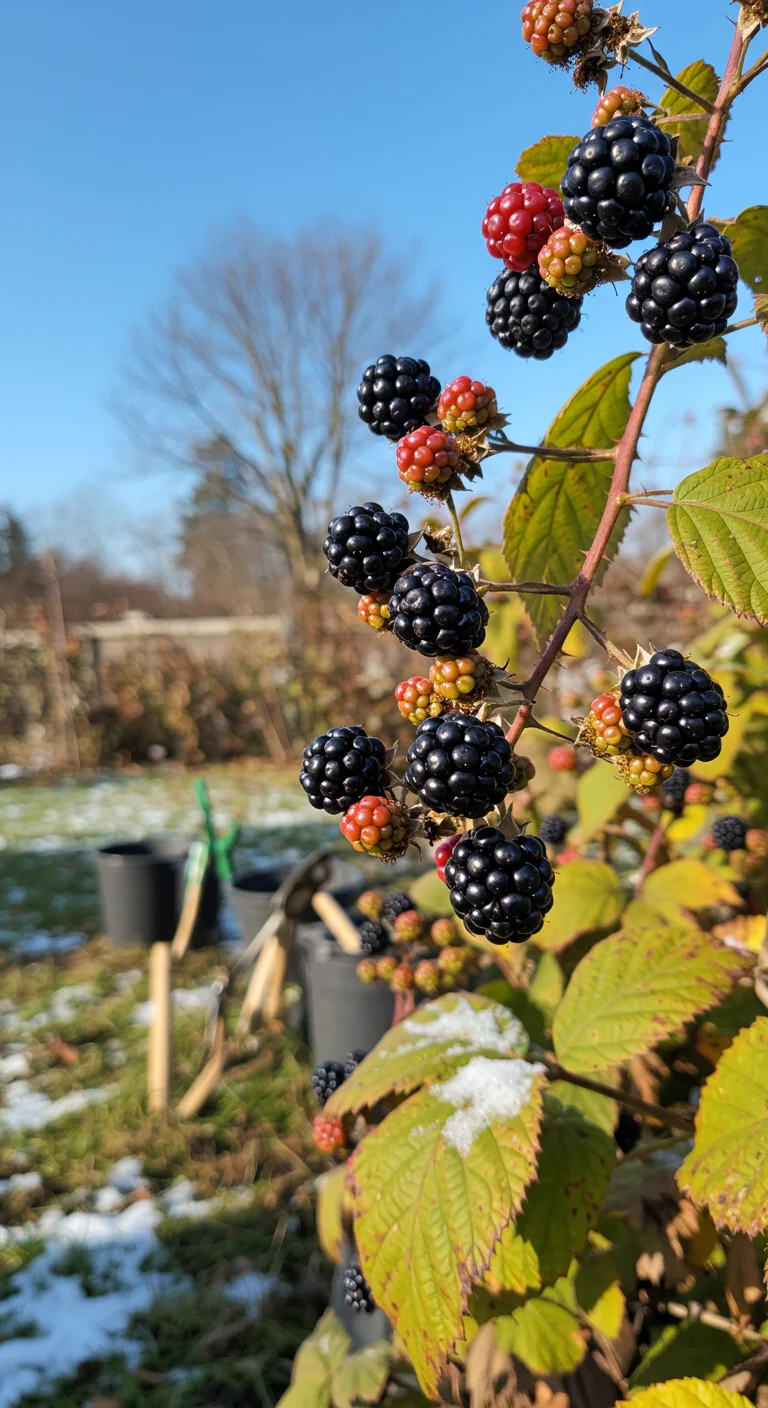
Blackberries are an excellent choice for gardeners in Zones 2 and 3, thanks to their hardiness and resilience in colder climates. Varieties such as ‘Black Satin’ and ‘Chester Thornless’ thrive in low temperatures and can produce abundant, sweet berries even after frost. When planting blackberries, choose a well-drained site with full sun exposure to encourage optimal growth. They benefit from a mulch layer to retain soil moisture and protect their roots during harsh winters. For best results, prune back canes in late winter to promote new growth and maximize fruiting potential in the summer months. With the right care, blackberries can be a delightful and productive addition to your cold-climate garden.
22. Jostaberry: The Hybrid Fruit That’s Here to Stay
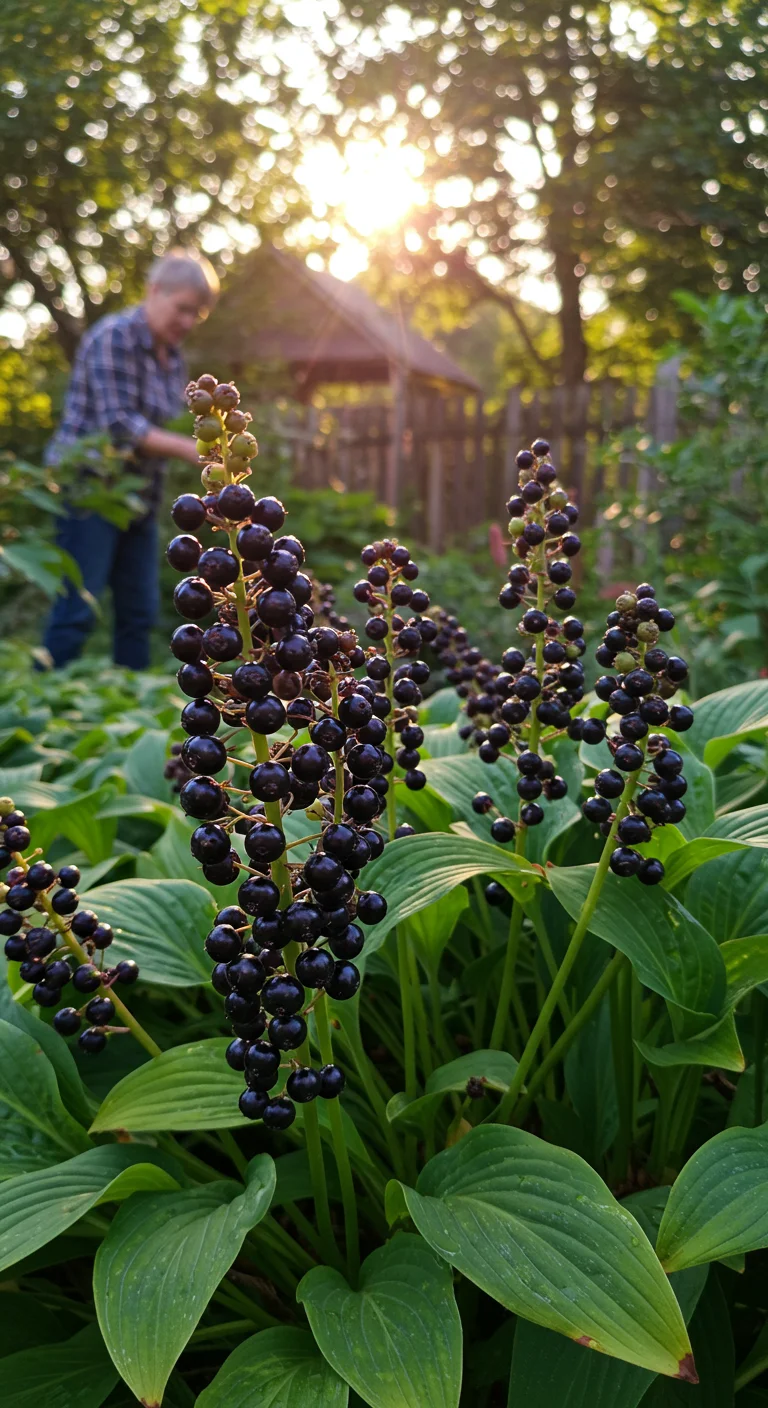
The Jostaberry is a unique hybrid fruit resulting from the cross between the black currant and gooseberry, making it an excellent choice for gardeners in Zones 2 and 3. This resilient plant thrives in cold climates and can withstand harsh winters, producing luscious, dark purple berries that are not only delicious but also packed with vitamins and antioxidants. Jostaberries have a tart-sweet flavor profile, making them perfect for fresh eating, jams, or desserts. They are typically ready for harvest in midsummer and require minimal maintenance, needing just well-drained soil and full sun to flourish. Additionally, Jostaberries are relatively pest-resistant, making them a worry-free addition to your garden. With their hardiness and versatility, they are sure to become a staple in your fruit-growing endeavors.
23. Medlar: The Unique Fruit with a History
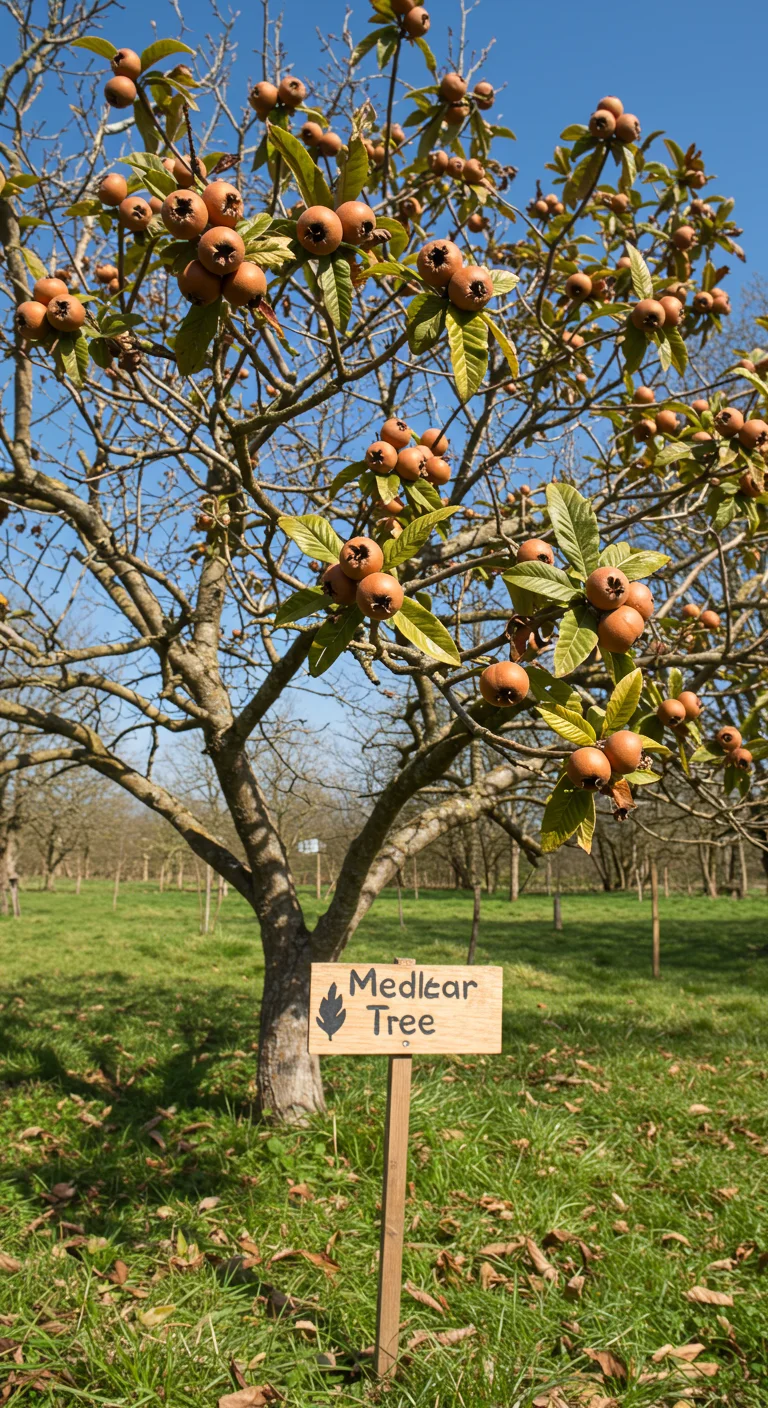
The medlar, a unique fruit that dates back to ancient times, is a hardy option for gardeners in Zones 2 and 3. This small, brownish fruit resembles a small apple and is often described as having a flavor akin to a mix of apple and pear when fully ripe. Medlar trees are remarkably resilient, thriving in poor soil conditions and tolerating cold temperatures, making them ideal for northern climates. The fruit is typically harvested in late spring, after it has been bletted—an intriguing process where it softens and develops its sweet, complex flavor. Incorporating medlar into your garden not only adds diversity to your fruit yield but also connects you to a rich agricultural history, as this fruit has been cultivated since Roman times, cherished for its unique taste and versatility in jams and desserts.
24. Filbert: The Nutty Companion for Hardy Gardens
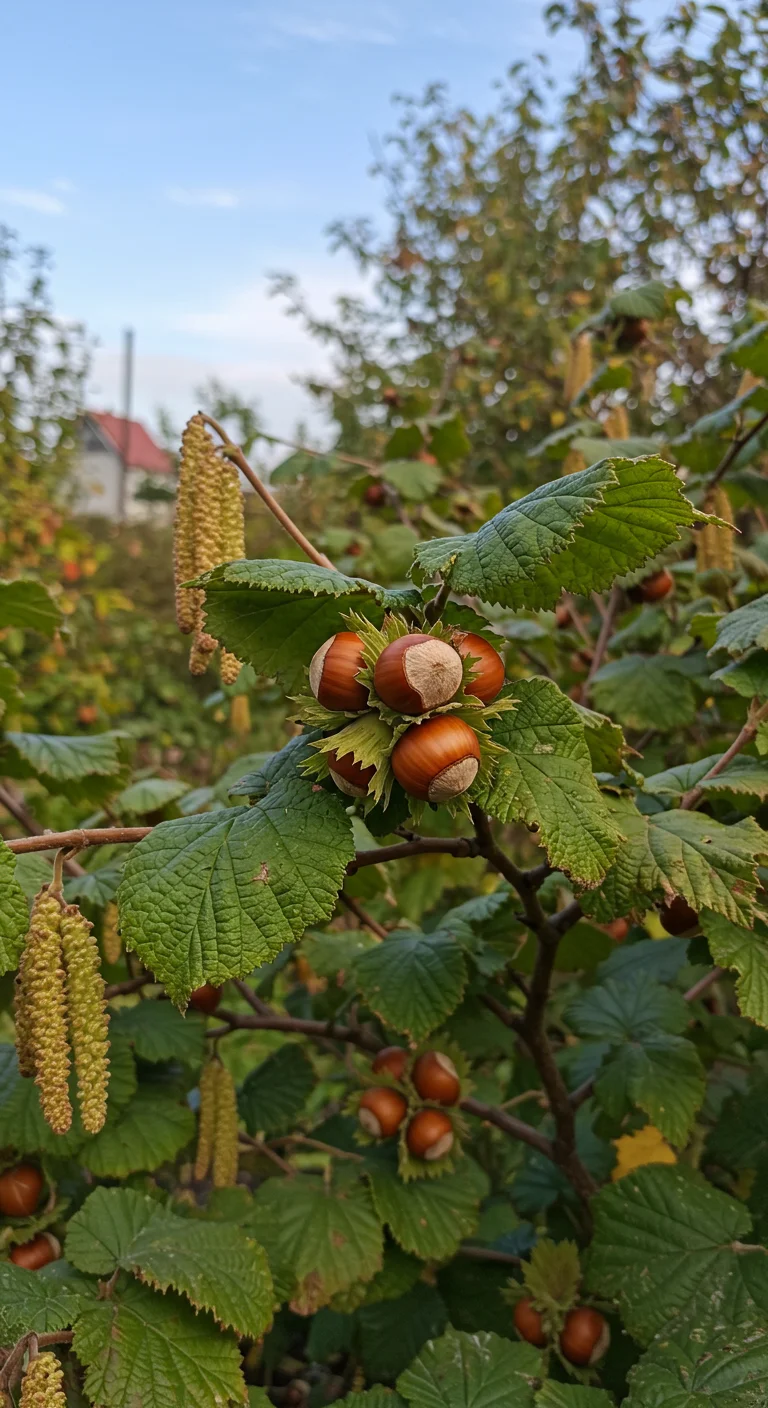
Filbert, also known as hazelnut, is an excellent choice for gardeners in Zone 2 and 3 looking to cultivate hardy fruits. This deciduous shrub can withstand harsh winter conditions and thrives in well-drained, nutrient-rich soil. Filberts typically produce a bountiful harvest of delicious, nutrient-packed nuts by late summer or early fall. To ensure optimal growth, plant filbert trees in a sunny location and consider pairing them with another variety for cross-pollination, which enhances nut yield. Regular pruning helps maintain their shape and encourages better air circulation, reducing the risk of disease. With their attractive foliage and unique catkin flowers, filberts not only contribute to your garden’s productivity but also add aesthetic value throughout the seasons.
25. Medlar: An Old World Fruit Making a Comeback
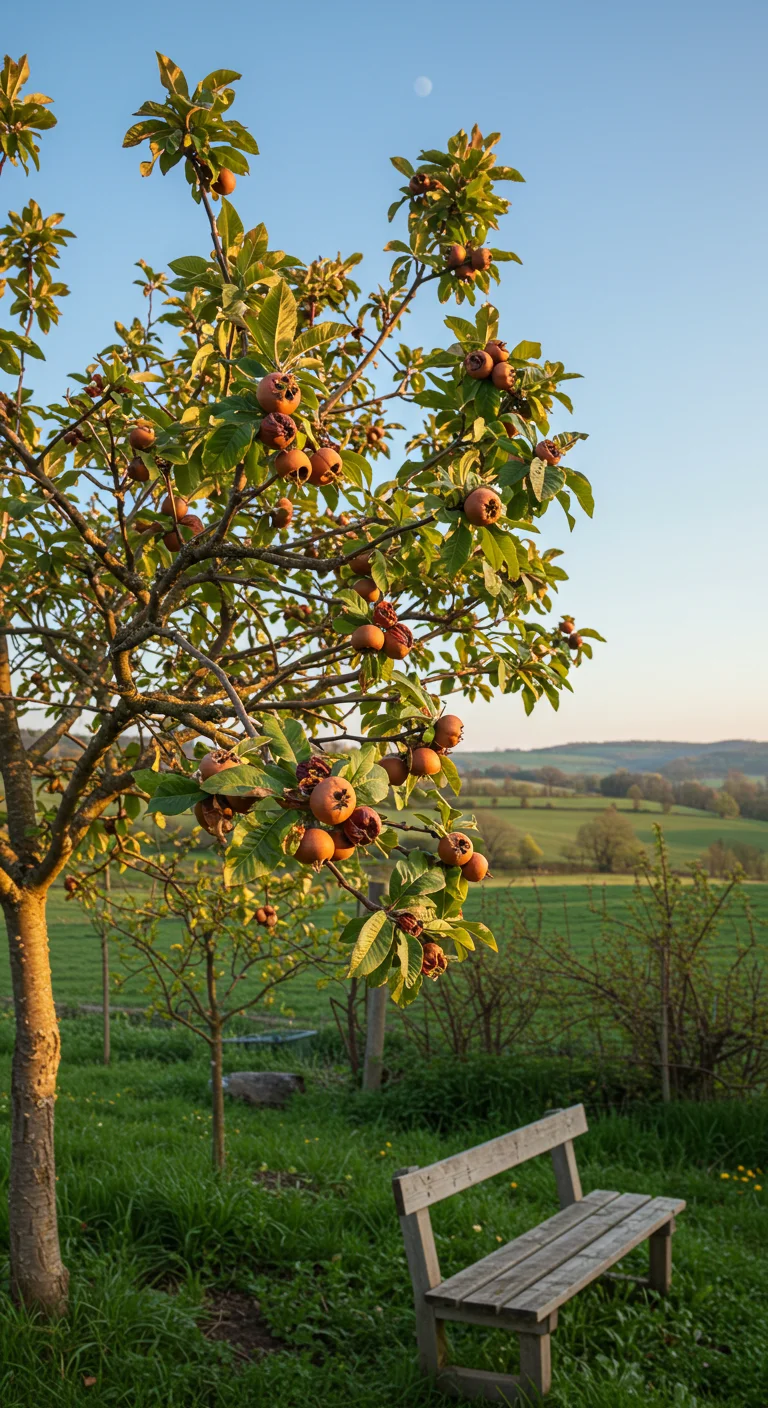
Medlar, a lesser-known fruit that hails from ancient times, is making a resurgence among gardeners in colder climates, particularly in Zones 2 and 3. This unique fruit, which resembles a small, brown apple, thrives in well-drained soil and can withstand harsh winters, making it suitable for these regions. Medlar trees are not only hardy but also attractive, featuring beautiful white flowers in spring and vibrant foliage throughout the growing season. The fruit requires a bit of patience, as it needs to be bletted—softened by overripening—to develop its sweet, tangy flavor, reminiscent of a mix between apple and pear. Growing medlar can be a rewarding experience for adventurous gardeners looking to diversify their fruit options while enjoying a taste of history.
26. Quince: The Aromatic Fruit for Cold Climates

Quince is a versatile and aromatic fruit that thrives in cold climates, making it an excellent choice for gardeners in Zones 2 and 3. This hardy deciduous tree, known for its stunning spring blossoms and golden-yellow fruit, requires full sun and well-drained soil to flourish. Quince trees are relatively low-maintenance, often resistant to pests and diseases, which adds to their appeal for the home gardener. Once harvested, the fruit can be enjoyed in various forms, such as jams, jellies, and sauces, or simply poached. Additionally, quince’s high pectin content makes it a favorite for canning, allowing you to preserve the delightful taste of autumn long into the winter months. With its unique flavor and fragrance, quince is a rewarding addition to any cold-climate fruit garden.
27. Wineberry: A Tangy Treat for Adventurous Growers
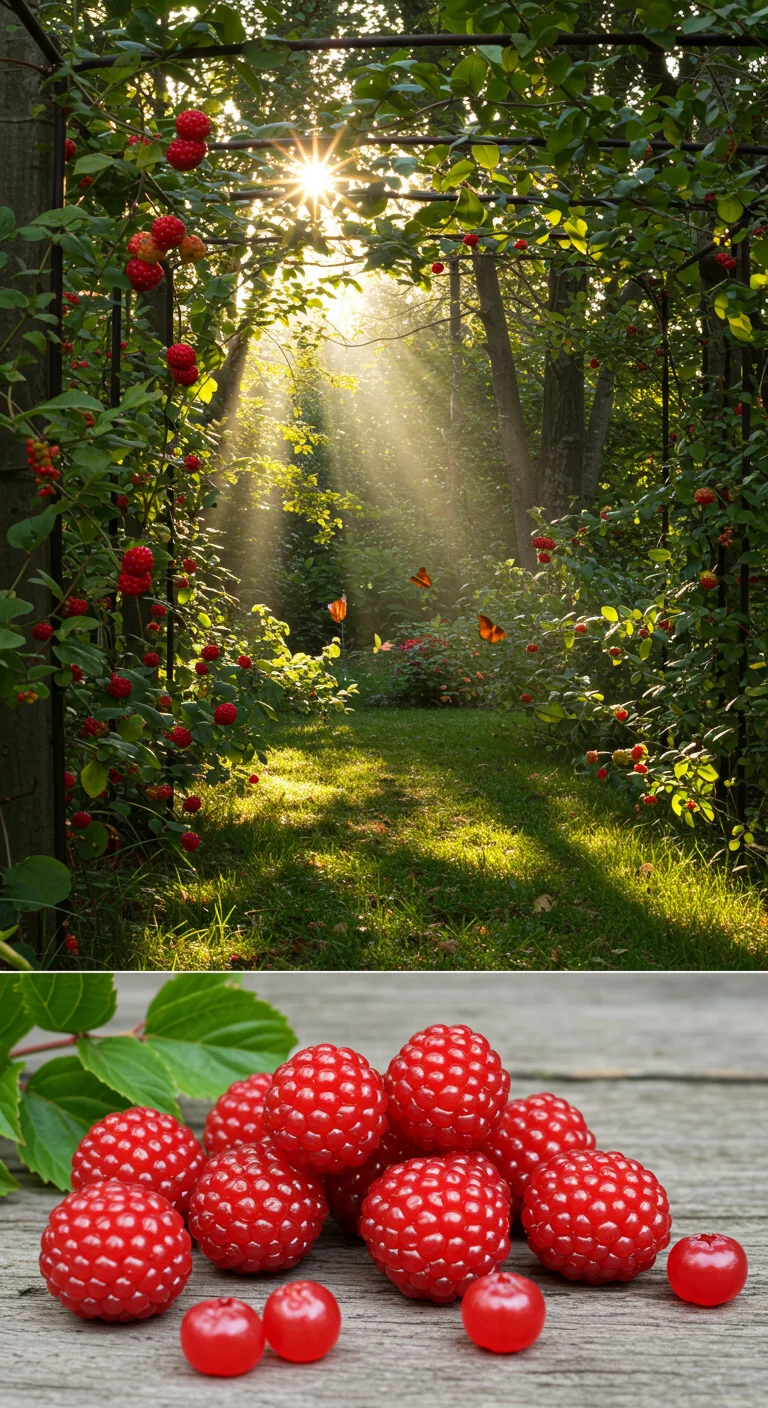
Wineberry (Rubus phoenicolasius) is a delightful addition for adventurous growers in Zones 2 and 3, renowned for its vibrant red, juicy berries that deliver a tangy, sweet flavor. These perennials thrive in well-drained soil and prefer partial shade, making them an excellent choice for woodland gardens or along the edges of shaded areas. They are hardy and can withstand colder temperatures, but be prepared to provide them with a sturdy trellis as they are vigorous climbers. Wineberries can be harvested from late summer to early autumn, and their unique tartness makes them perfect for jams, jellies, or even fresh in salads. Moreover, they attract beneficial wildlife and pollinators, enhancing your garden’s ecosystem while providing a tasty treat to enjoy.
28. Hardy Figs: Surprisingly Resilient in Cold Zones
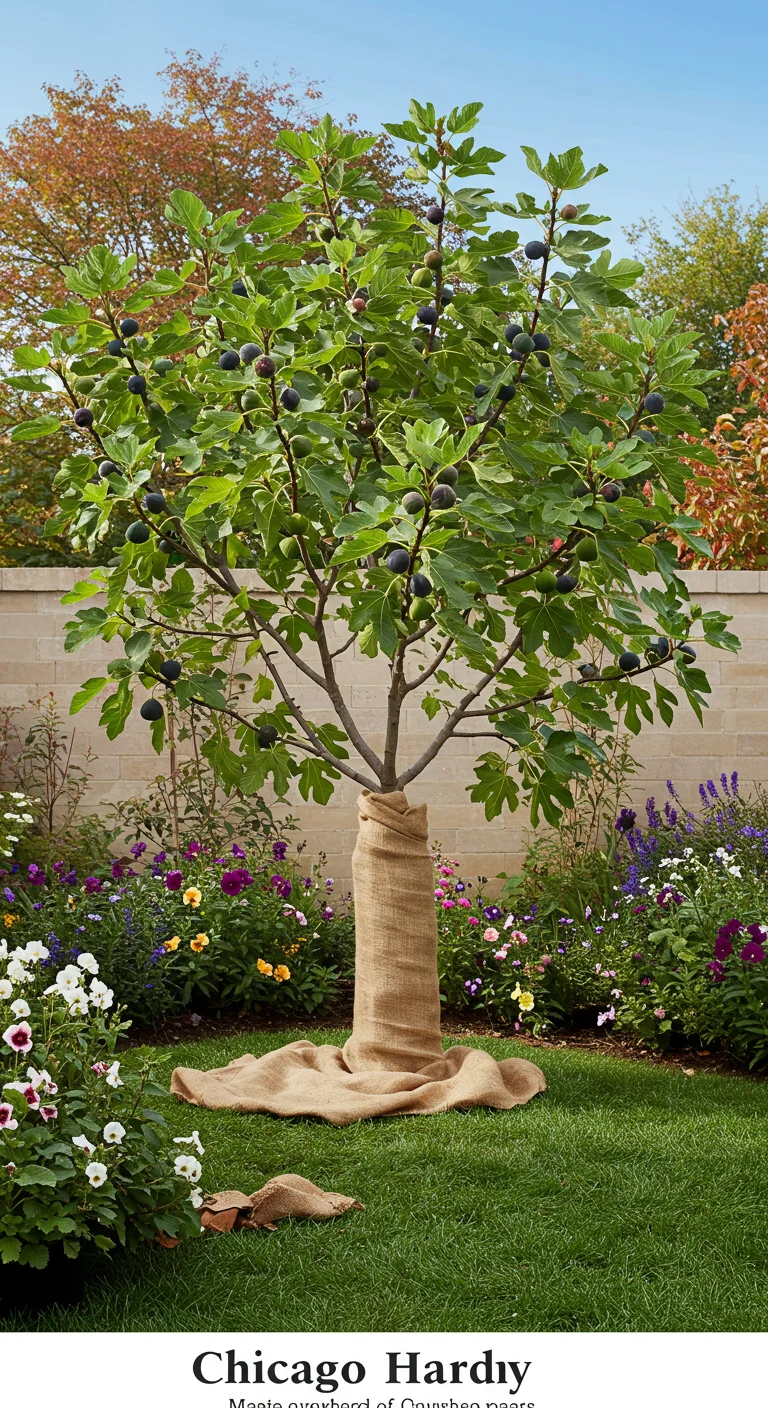
Hardy figs, particularly varieties like ‘Chicago Hardy’ and ‘Celeste’, are surprisingly resilient and can thrive in USDA Zones 2 and 3 with proper care. These figs can withstand temperatures as low as -10°F (-23°C) when grown in well-drained soil and provided with adequate winter protection, such as mulching or wrapping the base with burlap. Planting them near a south-facing wall can also help them absorb heat, enhancing their survival chances. Despite their cold tolerance, figs prefer full sun and should be watered regularly during dry spells to encourage fruit production. With patience and a little innovation, gardeners in colder climates can enjoy fresh figs right from their own backyards, making them a delightful addition to any hardy fruit garden.

